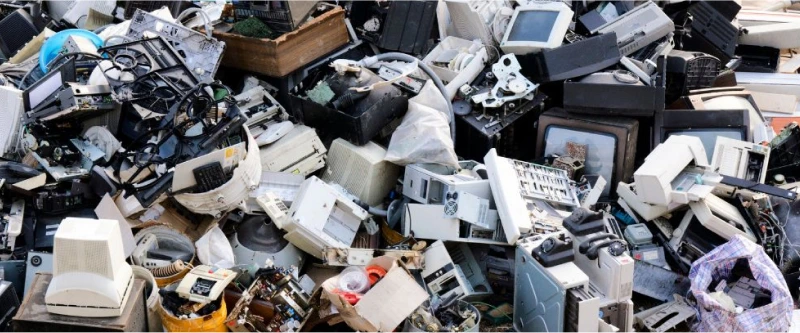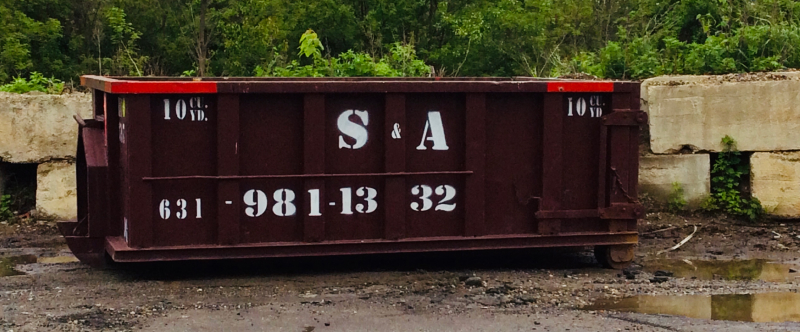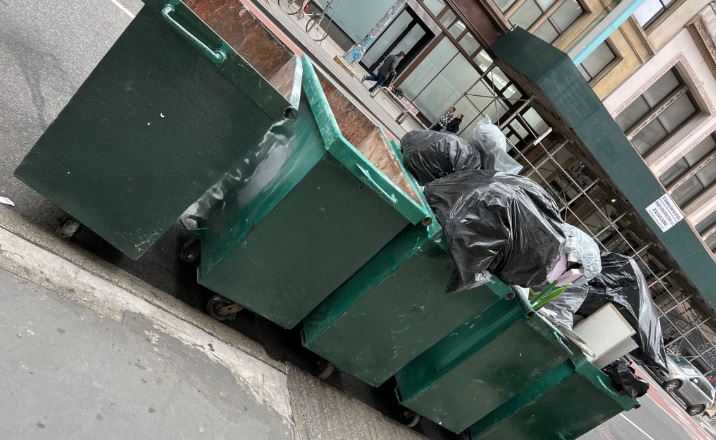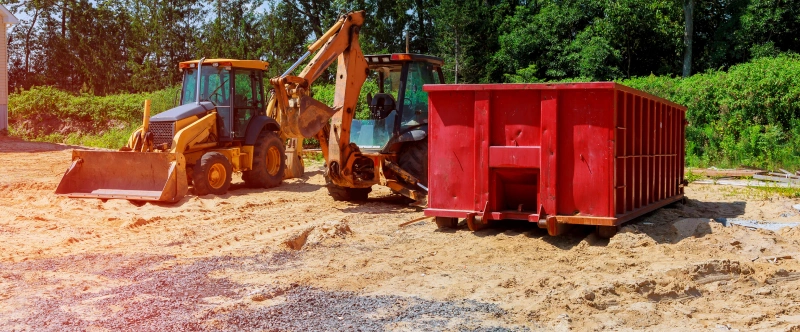The ever-increasing blend of technology in our daily lives also brings along a huge waste disposal problem with it which is e-waste. Electronic waste, or e-waste, is an ever-growing problem that if not properly dealt with can cause major health and environmental risks. With the rapid advancement of technology, devices quickly become obsolete, leading to a significant increase in electronic junk. Properly managing and disposing of e-waste is crucial for environmental sustainability and public health.
This article provides practical and useful electronic junk removal tips that will help you tackle this issue effectively. By following these e-waste management tips, you can contribute to a healthier planet and a more sustainable future.
Understanding E-Waste: What Counts?
Before tackling the issue of e-waste, it’s crucial to understand what it consists of. E-waste includes:
- Mobile Phones and Tablets: These are often replaced frequently due to rapid advancements in technology.
- Computers and Laptops: Old computers and laptops become e-waste when they are replaced with newer models.
- Televisions and Monitors: CRTs and outdated LCD screens are common forms of e-waste.
- Household Appliances: Items such as refrigerators, microwaves, and washing machines.
- Batteries: Used batteries, especially from portable electronic devices.
- Cables and Chargers: Old and unused charging cables and power adapters.
Identifying these items in your home or workplace is the first step toward safe electronic waste removal.
Assessing Product Lifespan Before Purchase
One of the most proactive steps in managing e-waste is to consider the lifespan of products before purchasing them. Research and compare different brands and models to identify those with longer lifespans and better durability. Manufacturers often provide information about the expected lifespan of their products. Here are some general guidelines to follow:
- Smartphones: Typically, smartphones have a lifespan of 2-3 years.
- Laptops: The average lifespan of a laptop is 3-5 years.
- Televisions: Modern LED TVs can last 7-10 years, while older CRTs (Cathode Ray Tubes) might last longer but are less efficient.
- Home Appliances: Major appliances like refrigerators and washing machines usually last 10-15 years.
Keep in mind these are just generalized expectancies and can vary from product to product based on the quality of the parts and the craftsmanship. So, make sure to research well about the products you’re about to purchase. Opt for products known for their longevity and good repair support. Investing in quality items that last longer reduces the frequency of replacements, thus minimizing e-waste.
Reducing E-Waste Generation
Minimizing the amount of e-waste generated can help in nipping the problem in the bud itself. The less e-waste you produce, the less you need to dispose of properly. Although reducing the amount of e-waste generated begins with mindful consumption and smart decision-making. Here are some strategies to minimize e-waste generation:
-
Multi-Functional Devices
Opt for multi-functional devices to cut down on the number of gadgets you own. A smartphone, for example, can function as a camera, GPS, and music player, eliminating the need for separate devices. This approach not only reduces e-waste but also simplifies your tech setup and saves money.
-
Upgrade Over Replace
Whenever possible, upgrade existing devices instead of replacing them. Upgrading can involve simple actions like adding more RAM to a computer, installing a software update, or replacing a worn-out battery. These upgrades can extend the lifespan of your devices, keeping them functional for a longer period and reducing the need to buy new ones.
-
Choose Durable and Energy-Efficient Products
As mentioned previously, invest in high-quality, durable products that are designed to last longer. Durable devices are less likely to break or become obsolete quickly, reducing the frequency of replacements. Additionally, choose energy-efficient products that consume less power, contributing to environmental sustainability.
-
Repair Instead of Replace
When a device malfunctions, consider repairing it instead of immediately replacing it. Many minor issues can be fixed with simple repairs. Seek out professional repair services or explore online tutorials for do-it-yourself fixes. Repairing devices not only reduces e-waste but also saves money and resources.
By adopting these strategies, you can significantly reduce the amount of e-waste you generate, contributing to a healthier environment and promoting sustainable consumption practices.
Only Buy What You Need
Consumer culture often drives us to buy the latest gadgets even when we don’t need them. It’s important to resist impulse buying by carefully considering whether a new device offers substantial benefits over what you currently own. Ask yourself critical questions about the necessity, functionality, and longevity of the product before making a purchase. By being mindful and intentional with your purchases, you can reduce unnecessary e-waste and save money in the long run.
Manufacturer Take-Back Programs and Exchanges
Many manufacturers offer take-back programs where they accept old devices when you purchase a new one. These programs ensure that your old electronics are recycled responsibly, preventing them from ending up in landfills. Additionally, some retailers offer exchange programs where you can trade in your old device for a discount on a new one. Participating in recycling old electronics with the help of these programs ensures that e-waste is managed correctly and provides an incentive for you, contributing to a more sustainable ecosystem.
Encouraging Manufacturer Responsibility
Advocate for extended producer responsibility (EPR), where manufacturers are accountable for the entire lifecycle of their products, including end-of-life disposal. By supporting companies that have robust recycling programs and environmentally friendly practices, you encourage responsible production and disposal of electronics. This advocacy can drive industry-wide changes, promoting sustainability and reducing the environmental impact of electronic waste. By choosing to buy from responsible manufacturers, you send a message that environmental stewardship is a priority, encouraging more companies to adopt eco-friendly practices.
Exploring All Recycling Options
Incorporating recycling options into your routine not only helps manage e-waste effectively but also promotes a culture of sustainability within your community. Proper recycling of e-waste is crucial for minimizing environmental impact so here is an electronic recycling guide to consider:
- Local Recycling Centers: Many communities have designated e-waste recycling centers. These centers are equipped to handle and recycle e-waste safely, ensuring that harmful substances do not end up in landfills. Make sure to check the operating hours and the types of electronics they accept.
- Specialized E-Waste Recyclers: Some companies specialize in e-waste recycling and offer convenient services to pick up your old electronics. These recyclers often provide more comprehensive services, handling a wider variety of electronic devices and ensuring that all recyclable materials are recovered. It’s essential to choose reputable companies that adhere to strict environmental standards.
- Retail Drop-Off Points: Some retailers have drop-off points for old electronics, ensuring they are recycled appropriately. This option is particularly convenient if you are already visiting the store for other purchases. Many large electronics retailers, such as Best Buy and Staples, have robust e-waste recycling programs in place.
When opting for recycling options, ensure that you are recycling your e-waste with certified recyclers who follow environmentally sound practices. Certified recyclers adhere to regulations and guidelines that protect both the environment and human health. By choosing certified recycling options, you can be confident that your e-waste is being managed responsibly and sustainably.
Donating or Selling Functioning Devices
If your electronic devices are still functioning, consider donating or selling them when upgrading or replacing them. Many non-profit organizations accept donations of working electronics for reuse, providing technology to those who may not be able to afford it otherwise. Donating functional devices to schools, community centers, and charities can make a significant difference in supporting the underprivileged and putting your old device to a good cause instead of letting it eat dust in a corner.
Websites and platforms such as eBay, Craigslist, and Facebook Marketplace offer avenues to sell your old gadgets if you are keen on making a few bucks. Doing so extends their lifespan and reduces e-waste while also filling your wallet with some extra greenery. Selling your devices not only helps reduce environmental impact but also allows you to recoup some of the investment you made in the original purchase. Before donating or selling, ensure that you wipe all personal data from your devices to protect your privacy. This practice not only benefits the new owner but also ensures that your sensitive information is not compromised.
Careful Disposal of Batteries
Batteries, especially those containing hazardous materials like lithium, cadmium, and lead, need careful disposal. Improper disposal can lead to environmental contamination and hazardous health risks. Follow these tips to ensure proper disposal:
- Avoid Landfills: Never dispose of batteries in regular trash, as they can leak harmful chemicals into the environment.
- Use designated drop-off points: Many retailers and recycling centers have specific bins for battery disposal.
- Check local regulations: Some areas have specific guidelines for battery disposal. Ensure you are compliant with local regulations.
Spreading Awareness Among Peers
One of the most effective ways to manage e-waste is to spread awareness. Educate your family, friends, and community about the importance of proper e-waste disposal and recycling. Share information about the environmental impacts of e-waste and how everyone can contribute to reducing it. Organize or participate in local e-waste collection drives and workshops to promote responsible e-waste management practices.
Conclusion
Effective e-waste management requires a combination of conscious consumer habits, proper disposal practices, and active participation in recycling programs. By understanding what constitutes e-waste and making informed decisions about our electronics, we can significantly reduce the environmental impact. Remember to buy only what you need, opt for quality products with longer lifespans, utilize manufacturer take-back programs, and explore all recycling options. Together, we can ensure that our electronic devices are not just useful in life but are also disposed of in ways that protect our planet for future generations.
FAQs
- What should I look for in a responsible e-waste recycler? Look for recyclers certified by organizations like e-Stewards or R2 (Responsible Recycling). These certifications ensure that the recycler follows environmentally friendly and safe e-waste processing practices.
- Can I recycle all types of electronics? No, not all electronics can be recycled due to their complexity or hazardous components. It is crucial to research beforehand and only recycle at designated e-waste recycling centers that are equipped to handle specific types of electronics. Some recyclers may also have restrictions on certain devices, so always check before dropping off your old gadgets.
- Where can I find more information about local e-waste recycling options? You can start by checking with your city or town government for a list of designated e-waste recycling centers in your area. You can also reach out to local environmental organizations or non-profit groups that may have information on e-waste recycling programs and events. Additionally, many electronic retailers have dedicated sections on their websites with details about their e-waste recycling services and drop-off locations. Overall, staying informed and proactive is essential in finding the best options for responsible e-waste disposal in your community.



